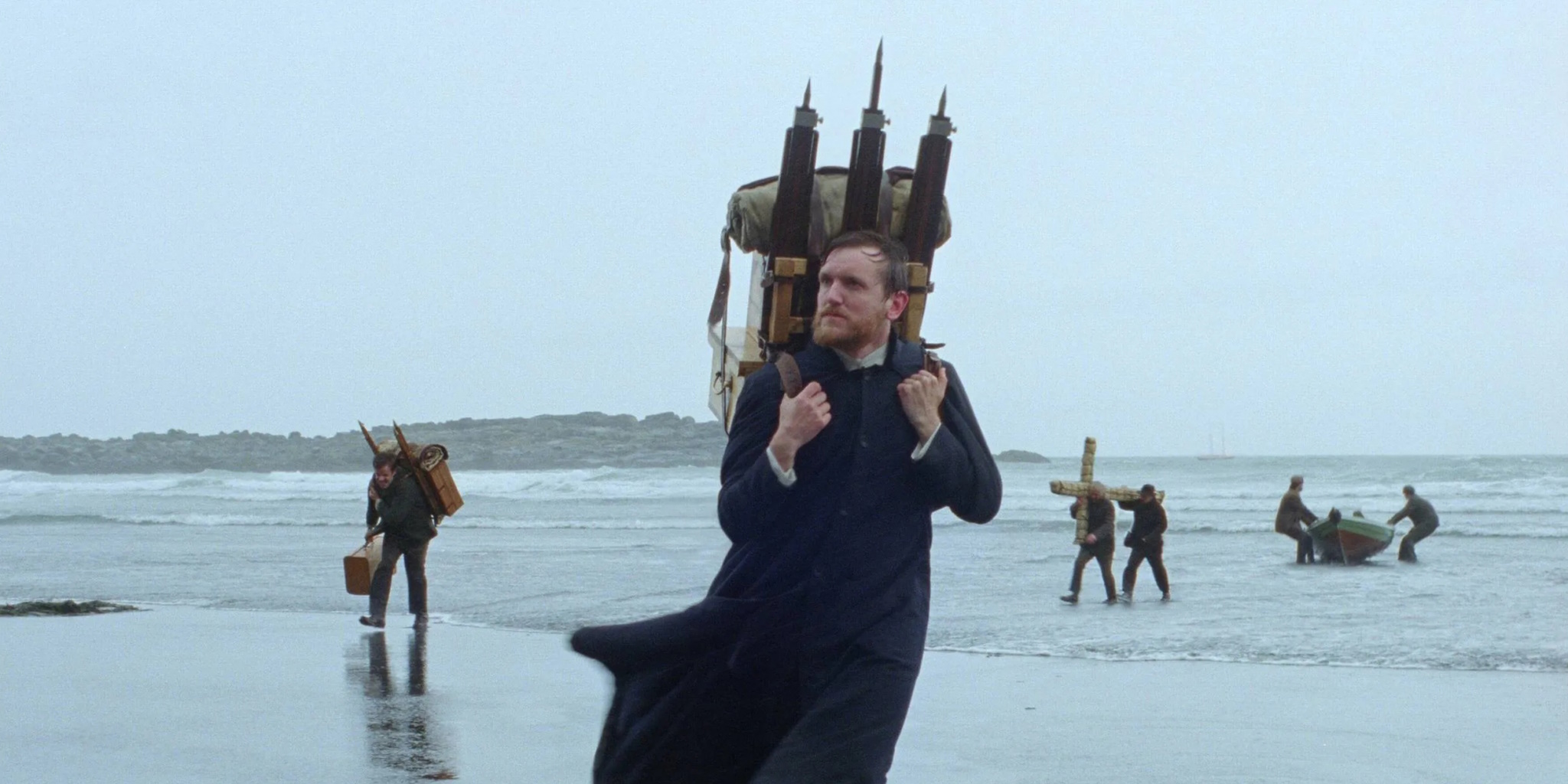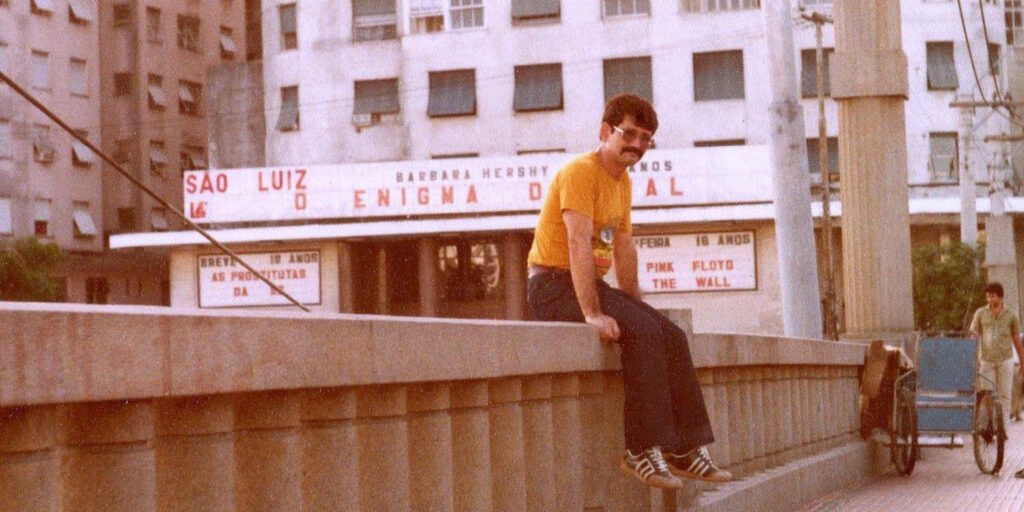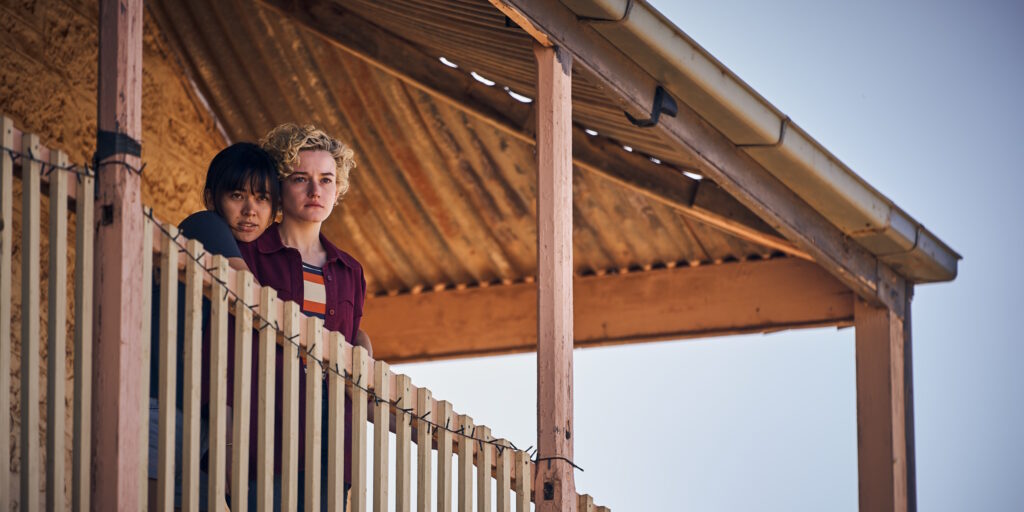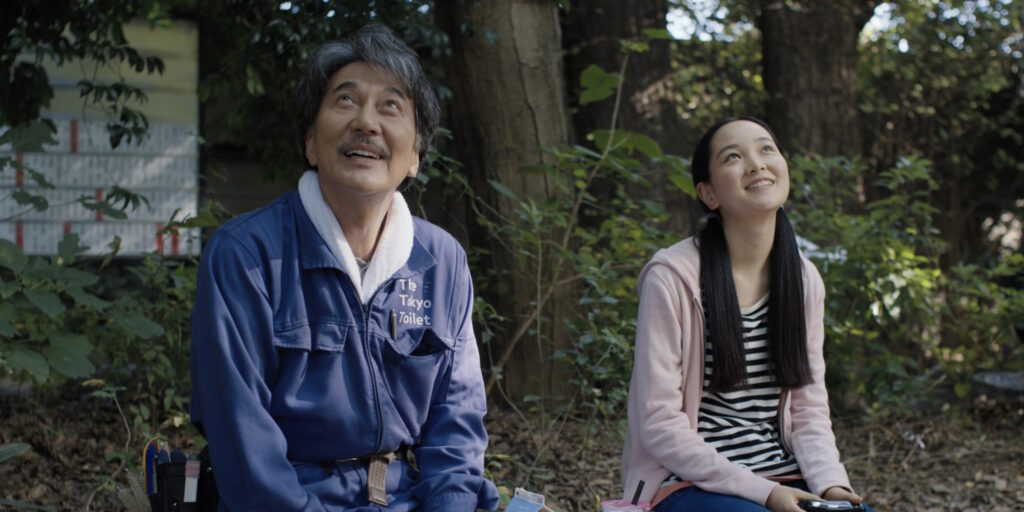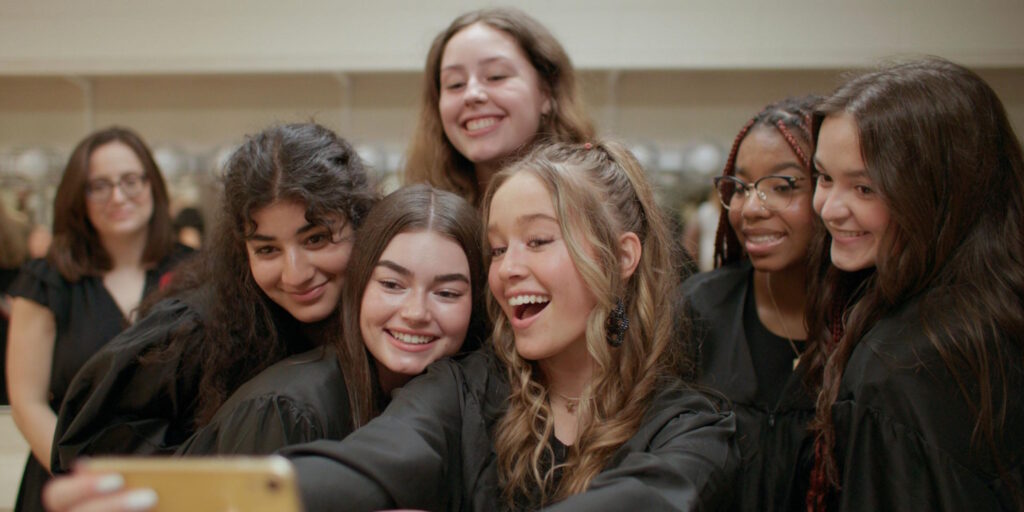Roughly at the midpoint of Martin Scorsese’s masterful 17th-century-set missionary drama, Silence (2016), Portuguese priest Sebastião Rodrigues (Andrew Garfield) falls into the clutches of Machiavellian Japanese functionary Inoue Masashige (Issey Ogata). In his effort to coerce Rodrigues to submit to the shogunate and embrace apostasy, Inoue wheedles the Jesuit missionary with a befuddling blend of derision, flattery, and paternalistic counsel. In one of his gentler moments, Inoue soothes the priest by absolving him of his missionary failings: “It’s not your fault. You were defeated by the swamp of Japan.” This is sophistry on Inoue’s part, but it contains a grain of truth. A zealous proselytizer would doubtlessly say that no person or place is beyond God’s reach, but perhaps some places are intrinsically inimical to Christian hegemony, either culturally or geographically.
Director Hlynur Pálmason’s new film Godland is about such a place: a remote village hunkered near the southeastern coast of Iceland in the latter half of 19th century. This is the destination of a Danish Lutheran minister named Lucas (Elliott Crosset Hove), whose superiors have charged him to build a church for the locals and oversee their spiritual well-being. Lucas is, as it happens, an amateur photographer, and a considerable part of his personal luggage consists of the cumbersome equipment necessary for the then-cutting-edge collodion wet-plate process. This requires not only a camera, but also a portable field darkroom to quickly develop the time-sensitive glass-plate negatives. The film’s epigraph asserts that the story was inspired by a preserved box of plates discovered in the Icelandic wilderness, but this is a bit of artful fiction on Pálmason’s part. The filmmaker employs Lucas’ passion as a motif throughout Godland in ways both overt and subtle, pondering the tension between two seemingly mutually exclusive notions: the camera lens as an all-seeing eye and the photograph as a narrow, distorted depiction of reality.
Lucas is young and idealistic, but also dreadfully out of his element. Rather than sailing directly to his new posting, he opts for a more arduous overland route, intent on capturing images of the people and landscapes that he encounters during his journey. It’s a baffling choice in the eyes of his local guides and porters, particularly the crusty, pipe-puffing Ragnar (Ingvar Sigurdsson), who can barely conceal his exasperated disdain for this bumbling minister. It’s not just that Lucas exhibits a city slicker’s ineptitude on horseback, or that he arrogantly insists on ignoring Ragnar’s hard-won instincts for survival on the tundra. The Kingdom of Denmark is a colonizing power in Iceland – having inherited Norway’s overseas possessions through a convoluted history of Scandinavian unions, partitions, and successions – and Danes like Lucas are seen as haughty interlopers.
Although Lucas makes a feeble effort to learn the Icelandic tongue, the language barrier consistently isolates him from the locals in the caravan. Underneath the nocturnal sun of the Arctic summer, the Icelanders huddle around their cooking fire and mutter about this foolhardy man of God who fusses over his photographic chemicals. The minister’s only ally seems to be his translator (Hilmar Guðjónsson). Pálmason quietly suggests that there may be a romantic attraction between the two men, a possibility that will shamefully haunt Lucas for the rest of the film, for more reasons than one. Indeed, much that transpires during the minister’s grueling journey – which comprises the entire opening hour of Godland’s unhurried 143 minutes – serves to break down Lucas’ naiveté. Rather than humbling him, however, the unforgiving hardships of the experience harden him into a more priggish and petulant figure.
In contrast to the smoldering fuse of Pálmason’s previous feature, the modern-day psychological thriller A White, White Day (2019), the director’s latest film is a more elliptical, contemplative work. He lingers indulgently on the bleak yet majestic landscape and the quotidian rituals of the Icelanders. The camera occasionally shifts to a literal God’s eye view, looking straight down on the terrain as a time-lapse succession of shots covers it in budding flowers, windblown snow, and volcanic ash. At times, Pálmason’s style feels distinctly lyrical and even faintly avant-garde. When Lucas lies sick and exhausted at one point, the director’s camera cuts away to an extended sequence of shots depicting lava as it oozes forth from the black earth. Are we witnessing Lucas’ fever-addled dreams? Or perhaps the gaze of a primordial deity, to whom the suffering of this one man means little? Or something else entirely? Pálmason is less interested in conveying a lucid meaning than in impressing the viewer with a potent sense of place. Plainly, “God” means something very different in this realm of fire and ice than it does in the soaring cathedrals of Copenhagen.
As he gradually settles into village life, Lucas continues to take photographs. His compositions are, admittedly, quite striking: He arranges his human subjects harmoniously in front of rustic buildings and breathtaking natural vistas. The minister is astute enough to recognize the artistic and ethnographic value of these images, but the illusion of control also appeals to him. Given the five-second exposure time, the wet-plate process cannot accommodate a quick, candid shot. Every photo must be meticulously planned, and every subject must remain perfectly motionless. Here Pálmason elegantly conveys the truism taken to heart by every documentarian: Images are not a neutral, objective record, but a product of countless decisions made by a fallible, agenda-driven observer.
In cryptic voice-over monologues, Lucas begins to muddle references to himself and God, hinting at the ego that drives his compulsion to document. A more straightforward, didactic film about Christianity and colonialism might have elevated this dark undertone to an explicit motive, but Godland is a much murkier film, and more wide-ranging in its interests. Pálmason is intrigued by signal loss of all kinds, whether in the crude, fumbling exchanges between folk speaking different tongues or in the strategic elisions that inevitably afflict any historical record. The 19th-century Iceland crystallized in Lucas’ photographs differs sharply from the one Pálmason shows us. At one point, Godland employs a languid 360-degree pan to create a high-spirited, visually stunning tableau of village life that would be worthy of a Dutch Master’s painting. The contrast with Lucas’ handsome but aesthetically rigid photos could not be more pronounced.
The minister might be the film’s protagonist, but Godland provides space for the viewpoints of several characters, including the gruff village widower Carl (Jacob Lohmann) and his half-Danish daughters, Anna (Vic Carmen Sonne) and Ida (Ída Mekkín Hlynsdóttir). Anna takes a shine to Lucas immediately, and her sweet demeanor and rebellious streak incline the viewer favorably toward their budding romance. In his private moments with Anna, the minister exhibits a sensitive manner, treating her with all the loving gentleness he affords to his delicate photographic plates. Yet Pálmason pointedly complicates our sympathies. With other villagers, Lucas is often severe and prickly, easily provoked into impatient outbursts. He strides pridefully around in his black cassock, looking on as others do the work to complete his church before the chill autumn winds arrive. Carl is suspicious of the minister and warns Anna away from him, but he also approaches Lucas with a curious blend of conciliation and one-upmanship. One can sense the villagers’ provincial pride wrestling with their self-loathing envy of the Danish colonizers.
Ultimately, it is Ragnar who assumes the role of Lucas’ natural foil. (If such labels mean anything in a film that is more absorbed with, say, the texture of the village’s wedding traditions than it is with conventional interpersonal drama.) The grizzled, taciturn Ragnar has no family other than his loyal hound, and he is initially ambivalent toward this sniffy, feckless holy man from across the sea. However, Pálmason adds unexpected psychological swerves to what could easily have been a tidier story of mutually hardheaded animosity. Ragnar softens after their arrival in the village, and a spiritual anxiety seems to vex him. His yearning for religious guidance feels genuine as he asks Lucas, hesitantly but earnestly, “How can I become a man of God?” Their different languages – translated haltingly by Ida – muddy any meaningful discussion of such lofty matters, but the real barrier to their reconciliation is Lucas’ testy, preoccupied apathy. He has already sized up Ragnar as a foul-tempered adversary, and over time he doubles down on this assumption. In his blinkered vanity, the minister cannot see that this man is exactly the sort of questioning soul he is meant to be serving.
Their antagonism looms over the film like the low, blue-gray clouds that seem to perpetually blanket the Icelandic skies, portending tragedy. By its grim conclusion, Godland’s sympathies have decisively shifted from Lucas to Ragnar, but even the minister’s most pathetic villainy is portrayed from a chilly, Old Testament remove. Indeed, whenever violence intrudes into Godland, Pálmason often captures the action in a medium to wide shot, only to then linger on the aftermath in close-up. To the filmmaker’s eye, the pallid flesh of a drowned corpse or the pooling blood from a crushed skull exhibit as much terrible beauty as an erupting caldera, underlining the indifference of this harsh landscape to humankind’s pretensions. In the end, in this place, all men are just bleached bones under the midnight sun.
Godland screens nightly at 7 p.m. on March 10 -12 at the Webster University Film Series.
